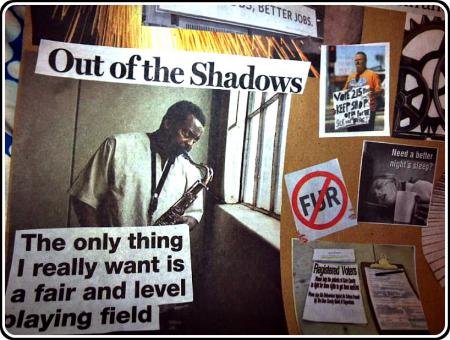Serendip is an independent site partnering with faculty at multiple colleges and universities around the world. Happy exploring!
education

[ED250] Titagya Blog
A resource: the blog for the partnership between Titagya Schools and the Bryn Mawr/Haverford Education Program.
From the Titagya blog,
This web page is designed as a place to collect and generate ideas, experiences, and connections useful to developing a partnership between the Titagya program to build preschools and kindergartens in Northern Ghana and the Bryn Mawr/Haverford Education Program, at Bryn Mawr and Haverford Colleges, outside of Philadelphia Pennsylvania. To begin, the partnership is focusing on exploring cross-cultural curriculum development, with a focus on the themes of conflict resolution and the role of creativity, interaction, and play in learning.
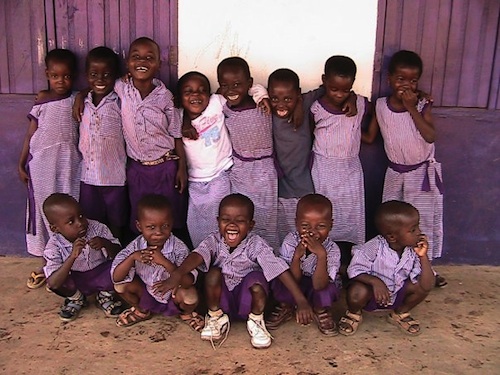
We will not be actively contributing to this blog in ED250, but it is still a repository of learning from Bi-Co students in past Education classes.

[ED250] Syllabus
The syllabus "lives" on Google Docs. It may change throughout the semester, so check the online version for the most current information about assignments.
Click for the syllabus (opens in a new window).

Reflections and Thanks
While last night's performances were really touching and funny, we all know that they went far beyond that. They showed our sense of agency to go into the world with the knowledge we've gained and actually make a change--whether that change is simply modifying how we will personally operate in the world or taking our knowledge to a broader audience through teaching, playing games, noticing bias in youtube videos, or rapping. The only thing I hope is that our efforts don't stop just because this class has. I hope we continue to keep what we've learned in our minds far beyond this class and our years at Bryn Mawr. In my group's performance, we didn't get a chance to share what Robin Kelly said, and that is that we can't change the media until we change society; and we cannot change society until we change ourselves. It is only in this sort of cyclical pattern of “making new people” that we can “make new television.”

Slam Performance
For our final performance, we decided to do some slam poetry! We all wrote about different aspects of our E-Sem experiences and from various perspectives. Mfon also did a crossword puzzle about the packing problem. Some other topics included learning about banking education and our own perceptions of our socioeconomic statuses and realizing our responsibilities as Bryn Mawr students to bring up touchy topics like class to campus and make them relevant to our peers. Our poems were personal and allowed us to share what we learned from this E-Sem and how class mattered to us back then and how it will matter to us in the future. I remember discussing the project with my group and all of us being unsure about which area about the broad topic of class we would be writing our poems about. It's a complicated subject!

The Arc: An Exhibit on Right Relationships
----------------------------------------------------------------------------------------------------------------
The Arc
Written on the wall, to be seen as the first thing when entering the exhibit:
“Right relationships are human relations in which each (or all) seek, without abandoning themselves, to be attentive and responsive to the needs and emotions of one another, quite apart from considerations of entitlement. There are also several important “negative” markers of right relationships, namely they must be free of systematic oppression, exploitation or manipulation. That is, a relationship is not “right” if participants seek to overbear in power (oppress), to overreach in resources (exploit), or to mislead for selfish advantage (manipulate).” – John A. Humbach1
The introduction to this exhibit, to also be printed on the wall:

If I Told You I Was Poor, Would You See Me Differently?
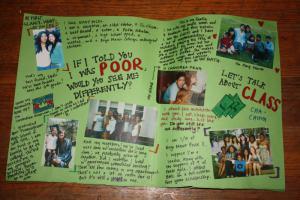
This is a poster-collage that I did last night. I was pleased yet frightened with the finished project and I ended up running to my posse. They were really proud of me and wanted to do their own version of the poster-collage. I was inspired by Marian's zine and I remember being so amused with it because I could relate on so many levels - except that instead of being a millionaire, I decided to declare that I was FAR from that. I think I've always kept my socioeconomic status as a secret in high school and now that I'm in college, I'm deciding to own up to my status, just like Marian did. I'm actually thinking of posting it outside of my dorm because I don't know what else to do with it. But I don't know how the people on my hall will react or if they will react at all. I kept the class workshop in mind because we discussed broadening the audience when it came to talking about class. And my audience is the Bryn Mawr community as a whole.
I had to resize the image (you could initially read it) so I will copy down what the text says on the poster.
On the bottom left, next to the picture of me and my little brother it says: "I graduated from Framingham High School in June 2011. I am the first in my family to go to college. The kid next to me is my youngest brother, Aaron. Hopefully, he'll go to college too."
New Points of View
Hello All,
This collage is titled “New Points of View,” and it aims to represent the various experiences and cultural capital we bring with us here to Bryn Mawr. Ultimately, social class is another form of diversity such as gender, race, or ethnicity. It shapes who we are and how we experience the world around us. However, social class is different from all of these things in the fact that the topic is alarmingly taboo. Although, like race and gender, it is something we are usually born into, we feel uncomfortable embracing it or even acknowledging its existance. This collage aims to ask the viewer whose culture has capital. Do we all have cultural capital? Whose is most important? Is anyone's cultural capital more valuable than others? Is there a way that we can acknowledge these differences rather than ignore them? And finally, how do we “bridge the gap” and learn from one another?
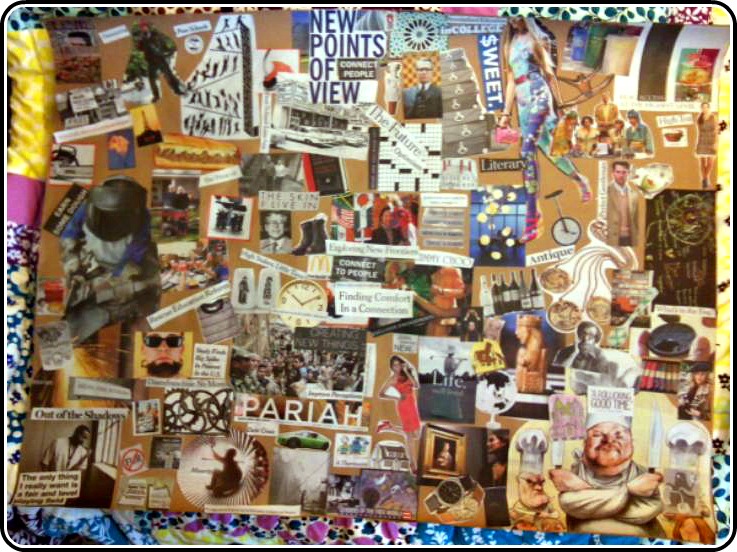
What differences do you see between the left side and the right side? Are these differences important? Which one more closely mirrors your experience?
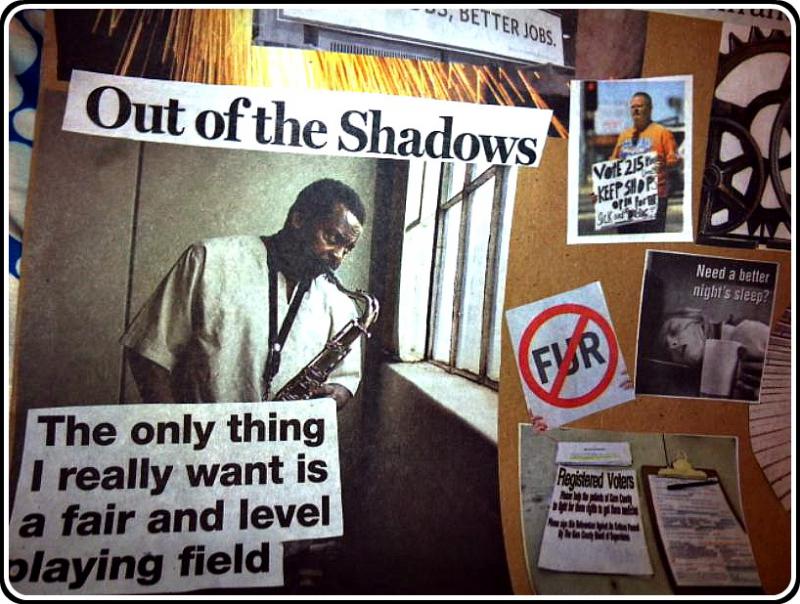
What are your feelings about the American Dream? Is it attainable for everyone?
